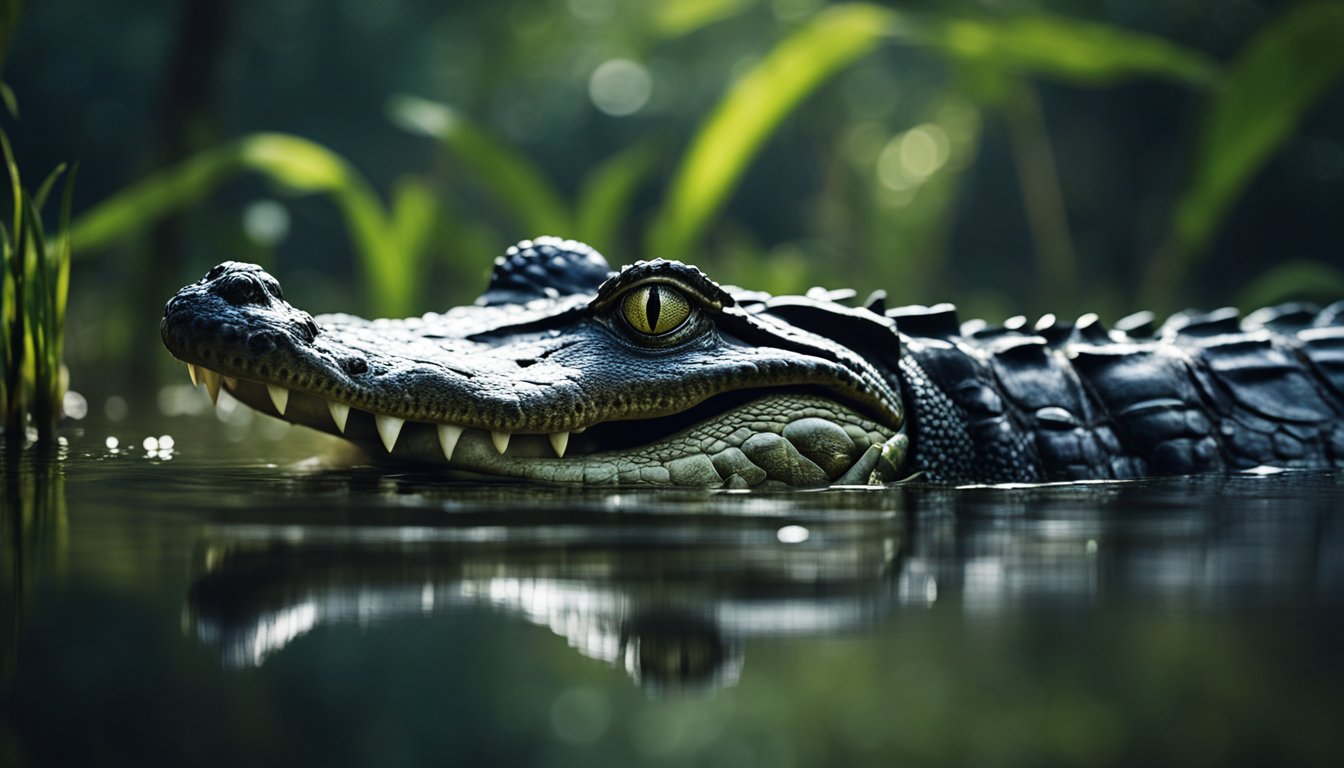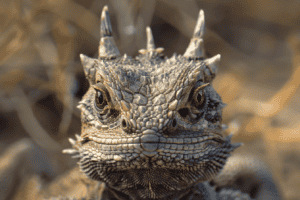Alligators are fascinating creatures, often dubbed as living fossils because they’ve been around for millions of years.
Imagine these giant reptiles as the gatekeepers of swampy realms, sliding through the murky waters with their armored bodies and watchful eyes.
They are masters of the marsh, and their secret lives have intrigued humans for generations.
With powerful jaws that can snap shut with incredible force, they are the epitome of what it means to be a top predator in their watery worlds.
These reptiles aren’t just about fearsome features though; they have intriguing social behaviors and play a vital role in the ecosystems they inhabit.
They create ‘gator holes’ that become crucial watering spots for other animals, especially during dry spells.
And let’s not forget about the mother alligator’s tender side, as she ferociously guards her nest and gently carries her hatchlings in her mouth, ensuring they reach the water safely.
The world of alligators is full of amazing surprises, each adding to the tapestry of life in the swamps.
These creatures are like nature’s engineers, altering their environments for the betterment of other species.
As we explore the secretive lives of these remarkable reptiles, we uncover the fascinating secrets they’ve held since the age of dinosaurs.
They remind us of the resilience and complexity of life on Earth, inviting young readers and adults alike to step into the wonders of the natural world.
Alligator Ancestry and Evolution
Alligators have a fascinating history that stretches back millions of years.
They’ve survived and thrived since the age of dinosaurs, adapting to a world that has changed dramatically over time.
Prehistoric Beginnings
Long before humans walked the planet, alligators roamed with the dinosaurs.
These magnificent reptiles first appeared about 37 million years ago during the late Paleocene epoch.
Their ancestors, part of a group of reptiles called archosaurs, were even older, showing how deep the roots of alligators go into the prehistoric past.
Evolutionary Adaptations
Over millions of years, alligators have become masters of adaptation. Their bodies have become fine-tuned for survival in their watery domains.
These adaptations include powerful jaws and a muscular tail used for propulsion in the water.
The armored skin of an alligator, made up of tough scales called scutes, provides protection and has remained relatively unchanged over time.
Alligators possess a unique valve in their throat called the glottis, which allows these creatures to capture prey underwater without drowning.
These evolutionary changes ensure that alligators continue to dominate their habitat, just as they did eons ago.
Physical Features and Behaviors
Alligators are fascinating creatures with distinct physical features and unique behaviors that enable them to thrive in their swampy habitats.
They are known for their impressive size, powerful bodies, and their roles as apex predators.
Remarkable Reptilian Traits
Alligators are reptiles, so their skin is tough and covered in hard scales called scutes, which act as armor.
They can grow to impressive lengths, with males reaching up to 14 feet and females averaging around 10 feet.
The sex of an alligator’s offspring is determined by the temperature of the nest: warmer nests tend to produce males, while cooler ones yield females.
Their eyes, ears, and nostrils are positioned on top of their heads, so they can see, hear, and breathe while the rest of their body is submerged.
They have a powerful tail that propels them through water and aids in balancing on land.
During colder periods, they enter a state of brumation, which is similar to hibernation, to conserve energy.
Mighty Hunters in Action
Alligators are apex predators using their keen senses to locate prey. Their diet mainly consists of fish, turtles, birds, and small mammals.
When hunting, they often lie in wait, partially submerged, and then launch at their prey with surprising speed.
They have incredibly strong jaws capable of crushing bones.
Their conical teeth are designed for gripping prey, not chewing, so they often swallow food whole.
They use a technique called the “death roll” to disorient and subdue larger prey.
These reptiles can be quite territorial and are usually solitary hunters.
However, they sometimes exhibit group hunting strategies, especially when taking down larger prey or scavenging.
Their behavior changes with age and size; younger alligators may stick together for safety, while larger ones are more confident in staking out their own territories.
Habitats and Ecosystems
Alligators have incredible homes and play a vital role in their surroundings.
They aren’t just lounging in the sun; they’re key players in their watery worlds!
Swampy Sanctuaries
Swamps are like natural water parks for alligators, filled with splashy fun and hidden corners.
These reptiles live in freshwater environments, including marshes, rivers, lakes, and, of course, swamps.
The American alligator calls the southeastern United States home, notably lounging in Florida’s Everglades and the murky waters of Louisiana’s bayous.
Swamps are a jigsaw puzzle of land and water, making them perfect for ‘gators to bask or sneakily swim.
Role in the Ecosystem
Alligators might seem like the tough guys of the swamp, but they’re really the keepers of the ecosystem.
By munching on fish and even other predators, they help keep animal populations balanced.
They’re known as keystone species because if you took them out of the picture, the whole ecological masterpiece would look very different.
Their nests and burrows become cozy homes for other critters too, showing that they’re not just about their own survival but also provide shelter for their neighbors.
Conservation and Coexistence
In the rippling waters of the swamp, alligators are part of a complex ecosystem.
As top predators, their well-being is crucial for maintaining ecological balance, yet their existence is precarious, with humans playing a pivotal role in their survival.
Threats to Alligators
Alligators once faced daunting odds with their numbers dwindling sharply in the 20th century.
Hunting for their prized skin and the destruction of their wetland habitats posed severe threats.
These reptiles also sometimes clash with people when they make their homes too close to human settlements.
Encounters can lead to fear and, unfortunately, the harming of these ancient creatures.
Conservation Efforts
Recognizing the precarious future alligators faced, conservationists undertook substantial steps to ensure their survival.
Protected status and legal measures were established, including staunch regulations against poaching.
Conservation programs sprang to action, focusing on habitat preservation and restoration.
Sanctuaries have become havens for alligators, where they are not only protected but can also be studied to gather information, aiding ongoing and future conservation initiatives.
Education plays a key role, too, as people learn how to live in harmony with alligators, appreciating their role in the ecosystem rather than fearing them.
The tireless work of dedicated individuals and groups has allowed alligator populations to recover, offering a shimmer of hope in the complex tapestry of conservation.
Frequently Asked Questions
Ever wonder about the thrilling encounters you might have while watching alligators in their natural habitat?
This section uncovers answers to some of the most intriguing questions about these majestic swamp dwellers.
What adventures can you expect to see on a show about alligators in the swamp?
Viewers are treated to heart-racing experiences as they observe alligators thriving in their swampy realm.
Shows often feature alligators hunting, caring for their young, and interacting with other swamp wildlife, giving a detailed insight into their daily lives and survival tactics.
Where can you watch educational episodes about swamp alligators for free?
Educational episodes about swamp alligators are often available for free on various wildlife channels online, including official nature and wildlife organization websites and video-sharing platforms such as YouTube.
These sources are gold mines for enthusiasts eager to learn about alligator behavior and swamp ecology without any cost.
Can you find full episodes about the secret lives of alligators online, and where?
Full episodes that reveal the secret lives of alligators are accessible online on streaming services like PBS and National Geographic.
One can dive into the mysterious world of these reptiles, learning about their ancient lineage and the complexities of their existence in the swamps.
What’s the scoop on the recently concluded season of a popular alligator TV show?
The latest season of the hit alligator TV show wrapped up with eye-opening discoveries and record-breaking moments, showcasing the largest alligators ever caught on the program and the dynamic challenges faced by the people living in close proximity to these powerful creatures.
Who is Troy Landry, and what’s fascinating about the number of tags he gets each year?
Troy Landry, affectionately known as the “King of the Swamp,” is a renowned alligator hunter featured on the popular reality TV series.
His expertise allows him to secure an impressive number of tags each year, reflecting his ability and deep understanding of alligator behavior, which fascinates fans and wildlife enthusiasts alike.
After a tragic loss, which swamp person is remembered for their contributions?
The swamp community fondly remembers Mitchell Guist, a cherished alligator hunter who passed away doing what he loved.
His contributions to the understanding and appreciation of swamp life continue to echo through the bayous, and his legacy inspires both fellow hunters and viewers around the world.









